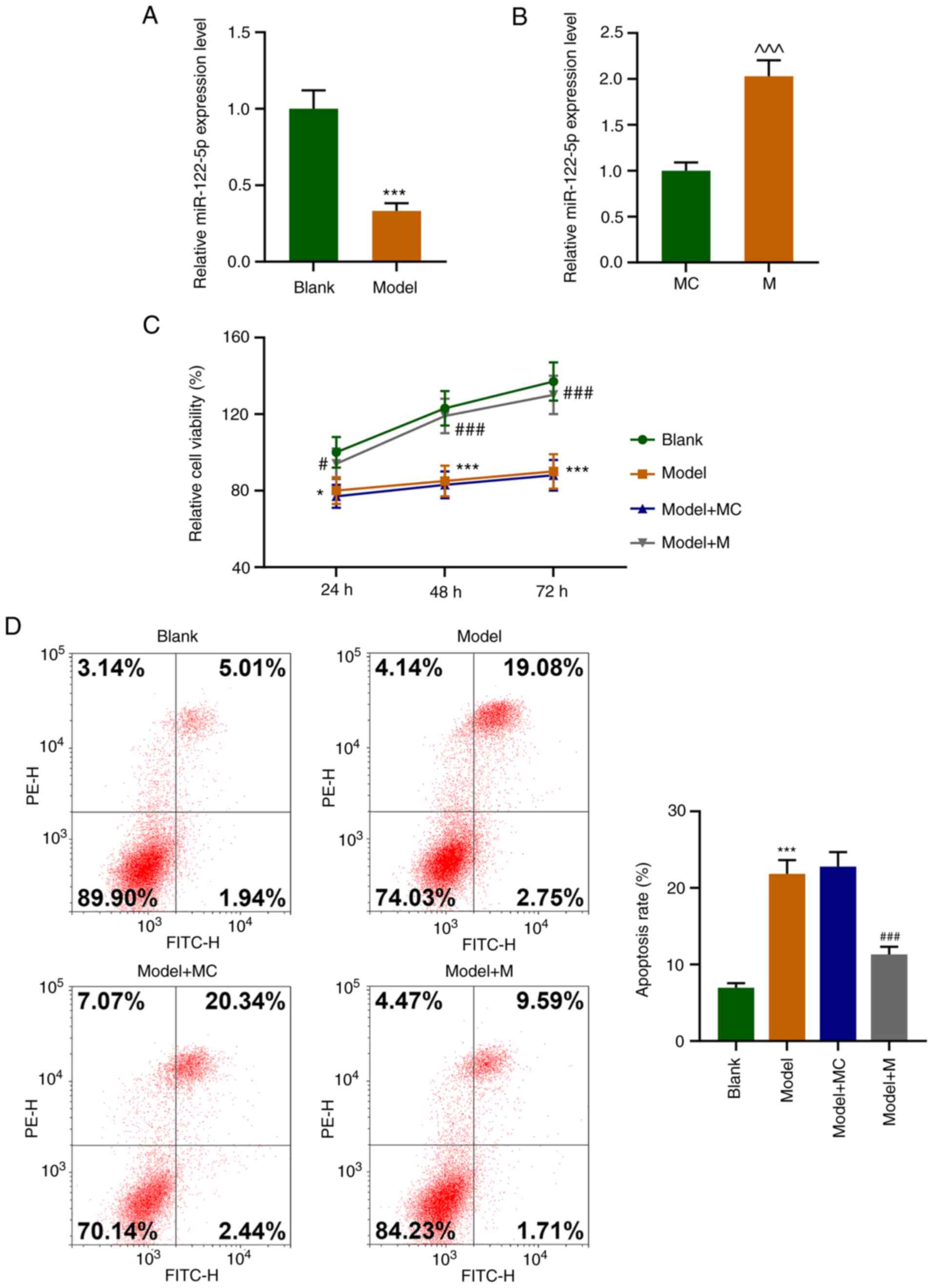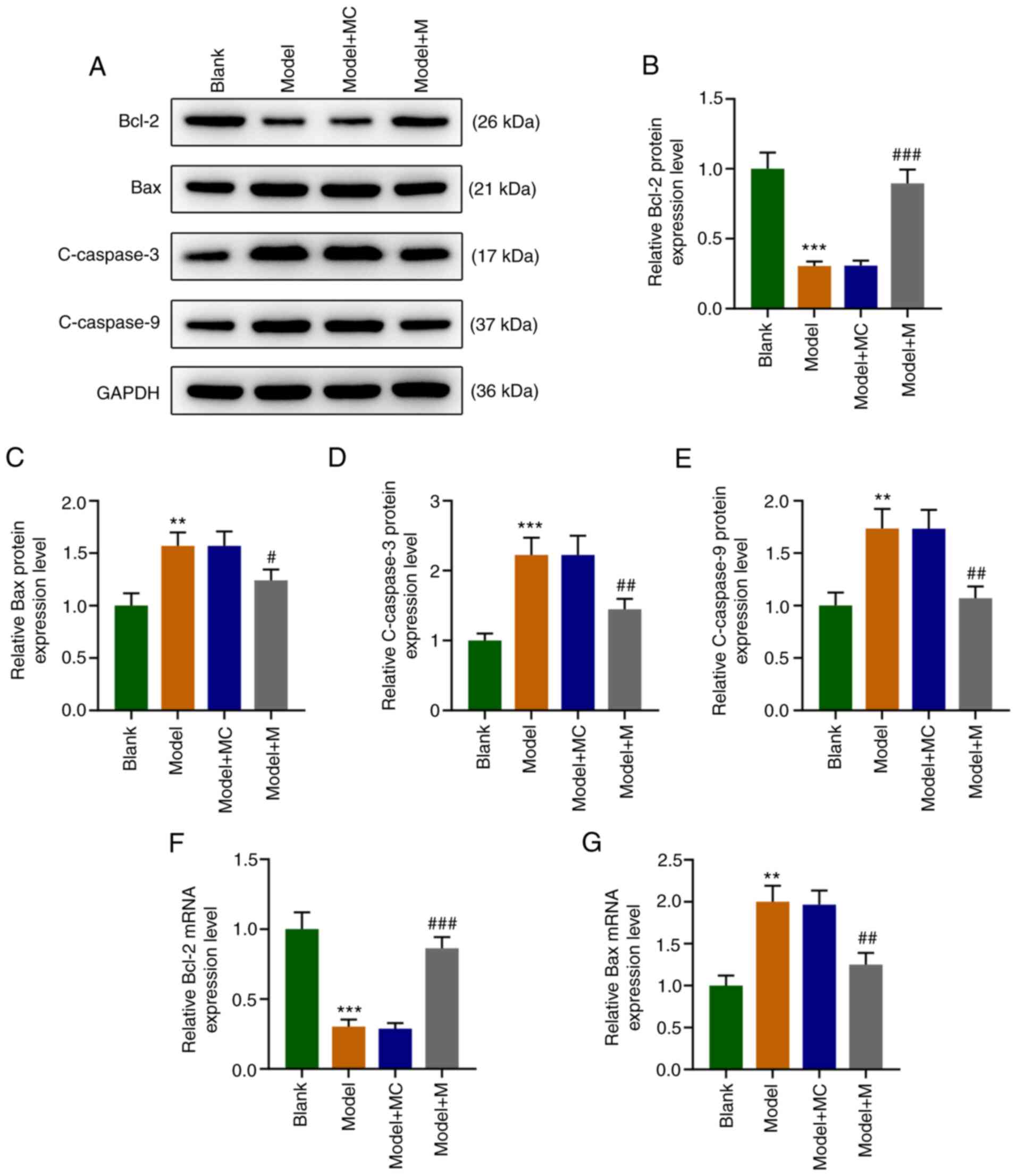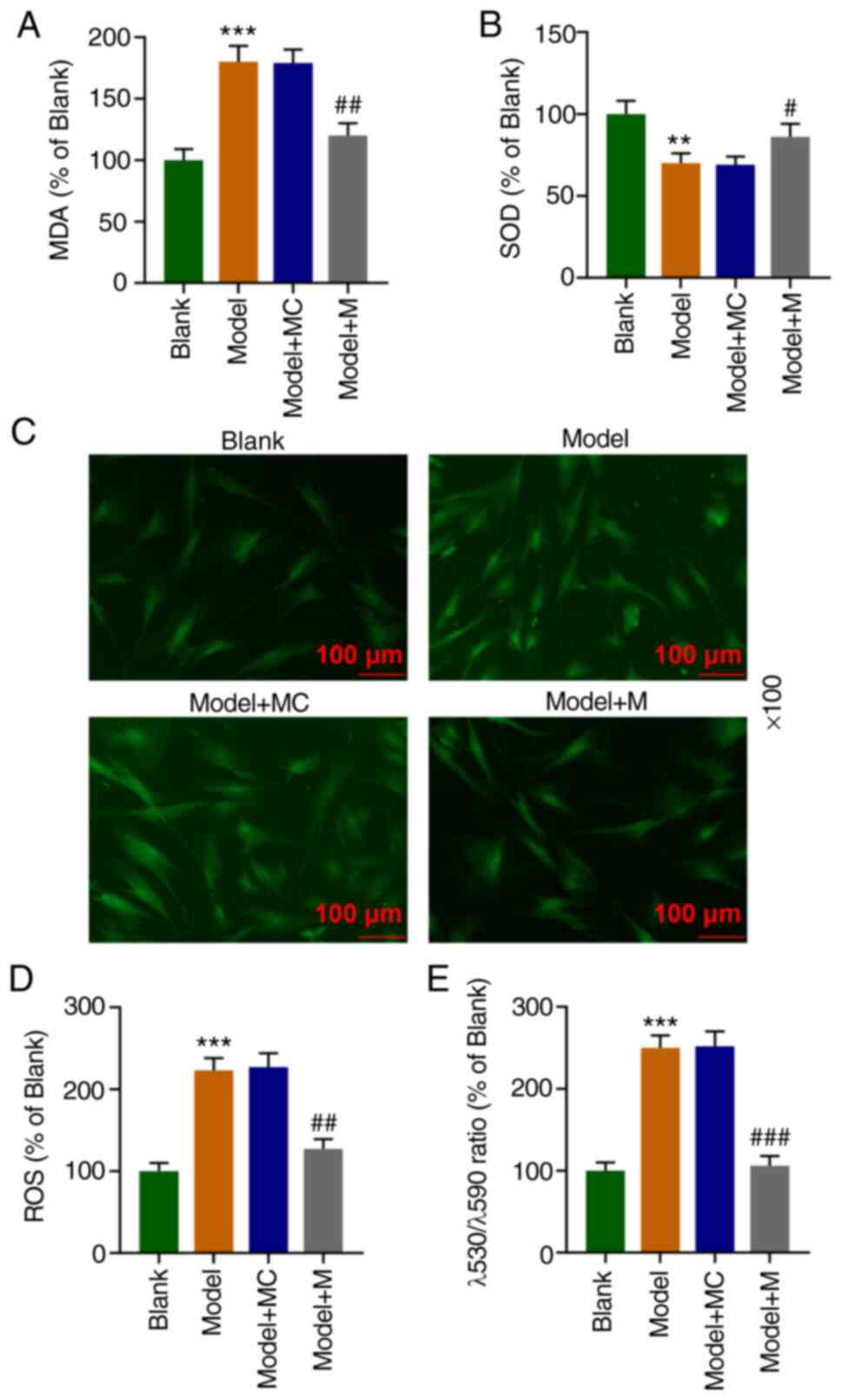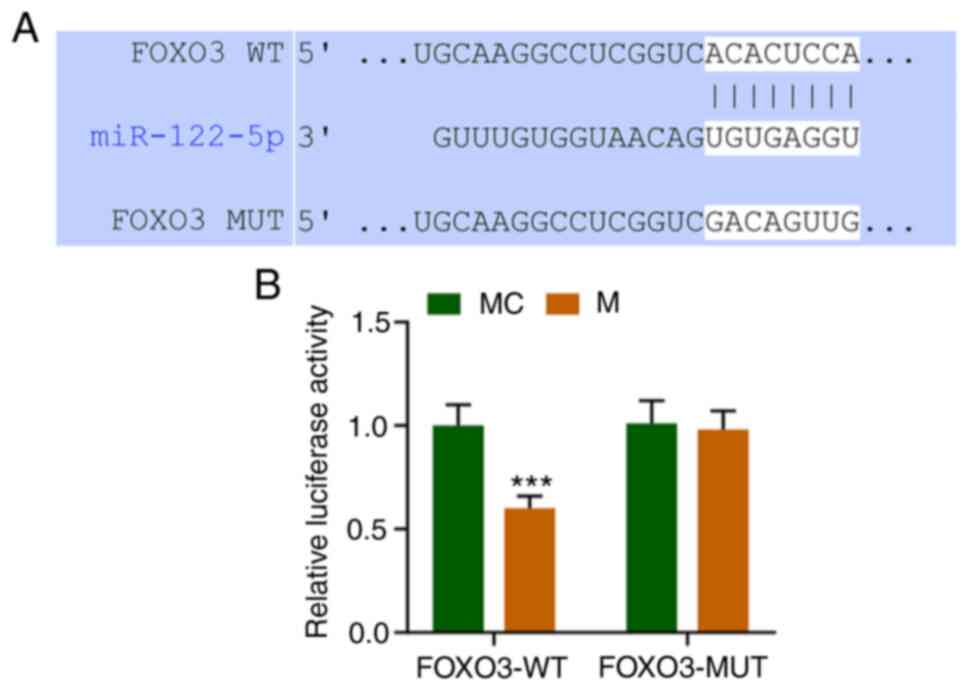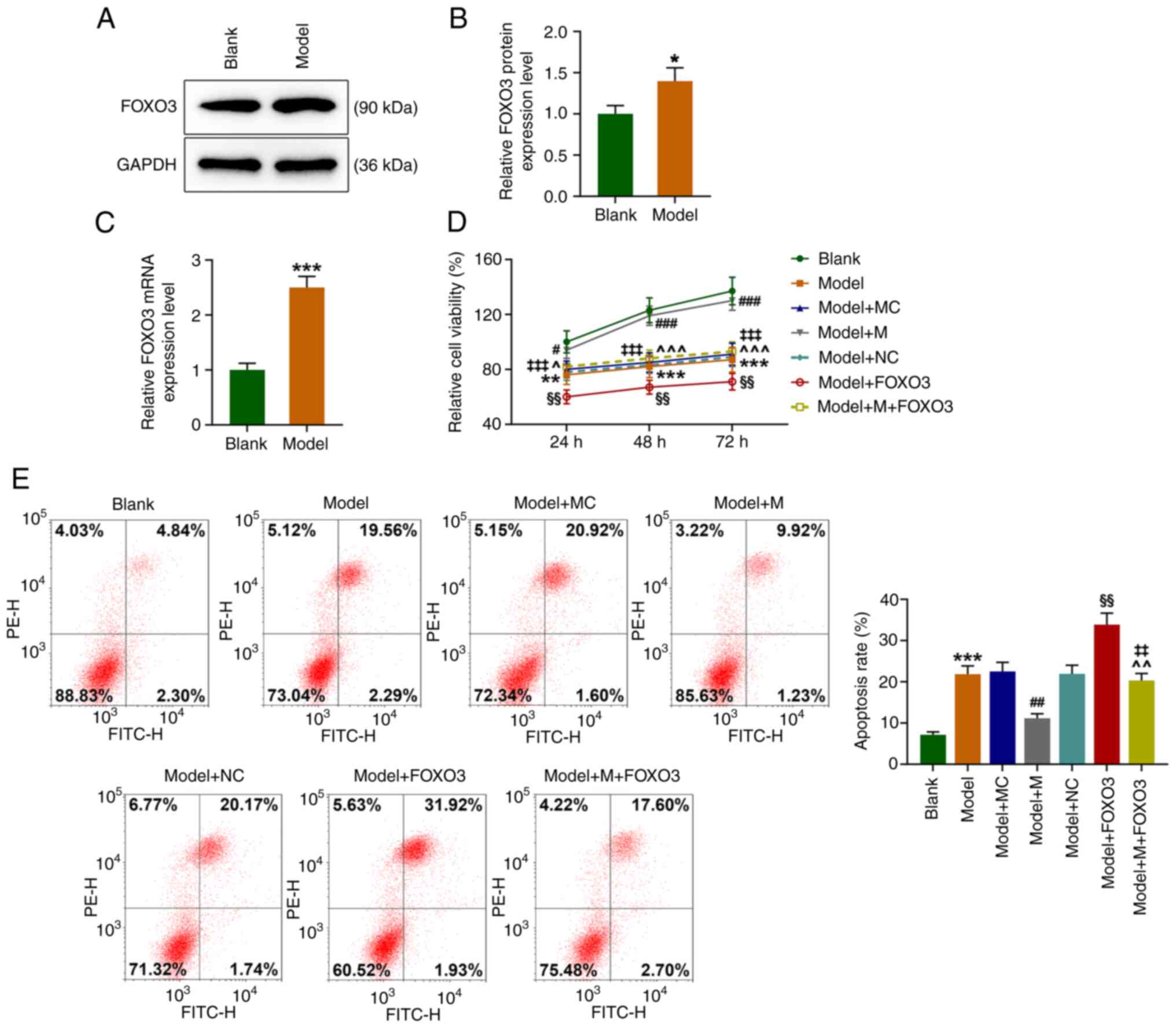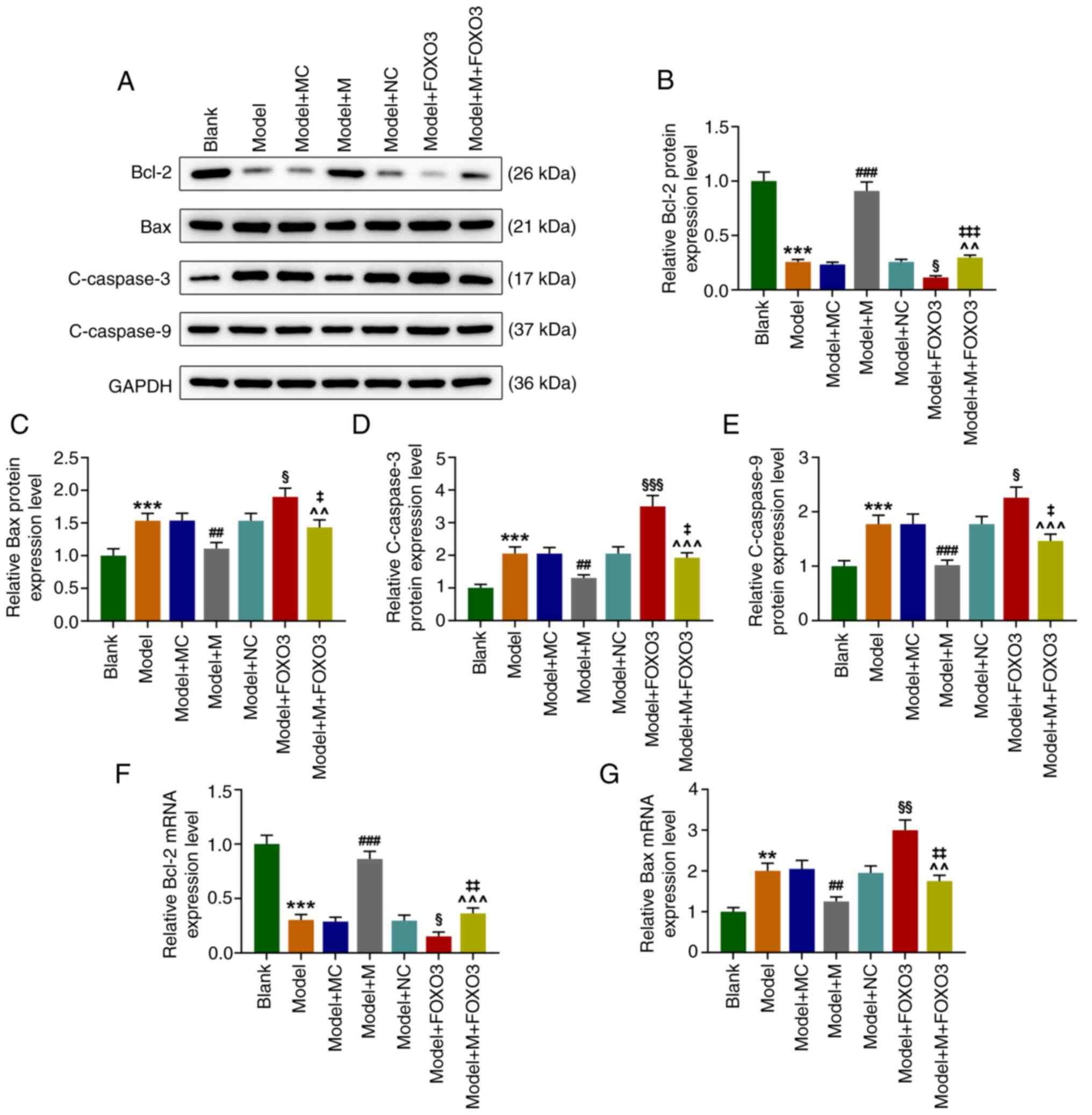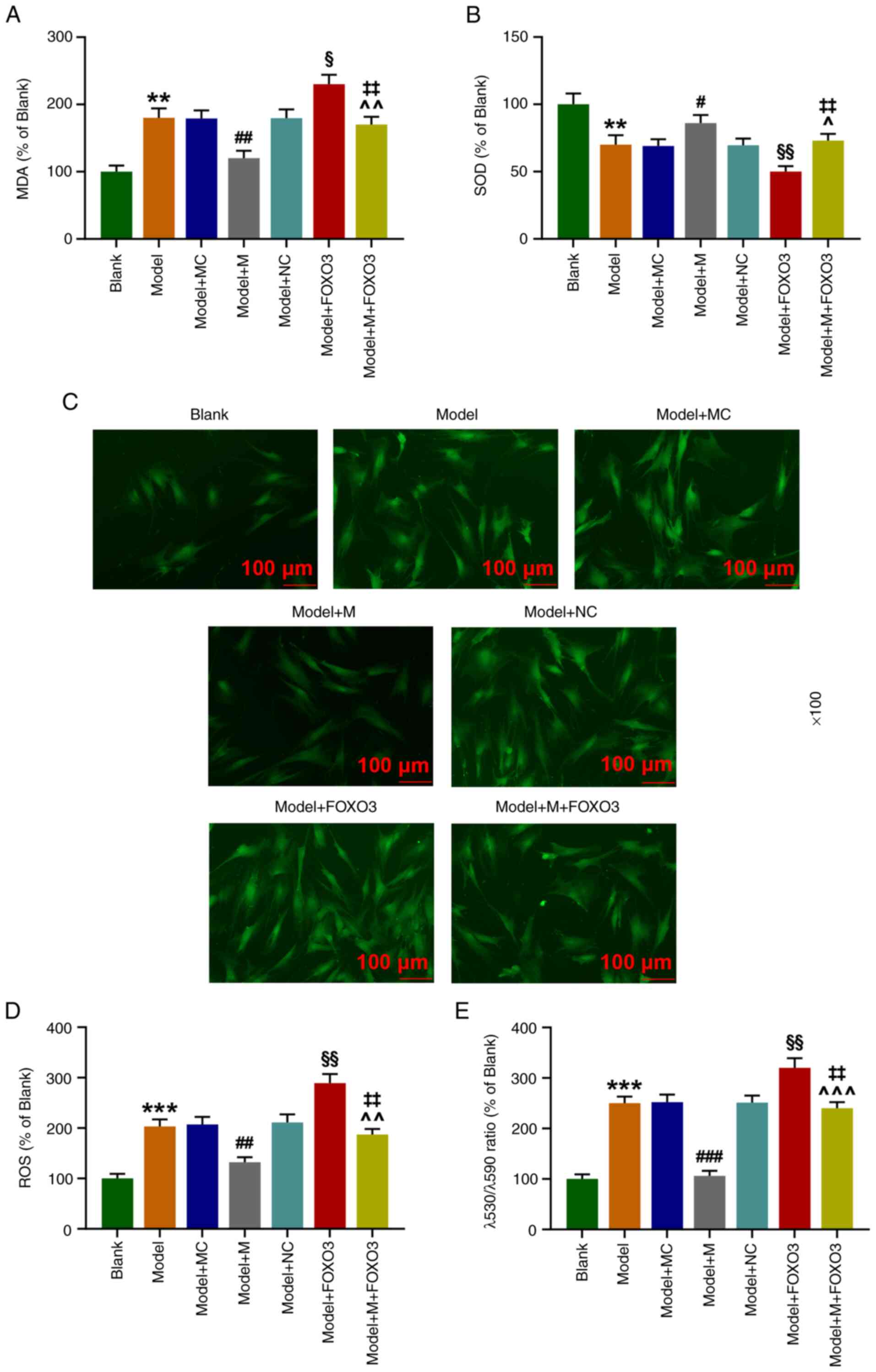|
1
|
Goutman JD, Elgoyhen AB and Gómez-Casati
ME: Cochlear hair cells: The sound-sensing machines. FEBS Lett.
589:3354–3361. 2015.PubMed/NCBI View Article : Google Scholar
|
|
2
|
Wang Z, Liu Y, Han N, Chen X, Yu W, Zhang
W and Zou F: Profiles of oxidative stress-related microRNA and mRNA
expression in auditory cells. Brain Res. 1346:14–25.
2010.PubMed/NCBI View Article : Google Scholar
|
|
3
|
Burns JC and Stone JS: Development and
regeneration of vestibular hair cells in mammals. Semin Cell Dev
Biol. 65:96–105. 2017.PubMed/NCBI View Article : Google Scholar
|
|
4
|
Bartel DP: MicroRNAs: Target recognition
and regulatory functions. Cell. 136:215–233. 2009.PubMed/NCBI View Article : Google Scholar
|
|
5
|
Vishnoi A and Rani S: MiRNA biogenesis and
regulation of diseases: An overview. Methods Mol Biol. 1509:1–10.
2017.PubMed/NCBI View Article : Google Scholar
|
|
6
|
Yao Q, Chen Y and Zhou X: The roles of
microRNAs in epigenetic regulation. Curr Opin Chem Biol. 51:11–17.
2019.PubMed/NCBI View Article : Google Scholar
|
|
7
|
Maruyama S, Furuya S, Shiraishi K, Shimizu
H, Saito R, Akaike H, Hosomura N, Kawaguchi Y, Amemiya H, Kawaida
H, et al: Inhibition of apoptosis by miR-122-5p in
α-fetoprotein-producing gastric cancer. Oncol Rep. 41:2595–2600.
2019.PubMed/NCBI View Article : Google Scholar
|
|
8
|
Wang W, Dong L, Zhao B, Lu J and Zhao Y:
E-cadherin is downregulated by microenvironmental changes in
pancreatic cancer and induces EMT. Oncol Rep. 40:1641–1649.
2018.PubMed/NCBI View Article : Google Scholar
|
|
9
|
Byrnes CC, Jia W, Alshamrani AA, Kuppa SS
and Murph MM: miR-122-5p expression and secretion in melanoma cells
is amplified by the LPAR3 SH3-binding domain to regulate Wnt1. Mol
Cancer Res. 17:299–309. 2019.PubMed/NCBI View Article : Google Scholar
|
|
10
|
Xiong H, Pang J, Yang H, Dai M, Liu Y, Ou
Y, Huang Q, Chen S, Zhang Z, Xu Y, et al: Activation of
miR-34a/SIRT1/p53 signaling contributes to cochlear hair cell
apoptosis: Implications for age-related hearing loss. Neurobiol
Aging. 36:1692–1701. 2015.PubMed/NCBI View Article : Google Scholar
|
|
11
|
Meng L, Chen Z, Jiang Z, Huang T, Hu J,
Luo P, Zhang H, Huang M, Huang L, Chen Y, et al: MiR-122-5p
suppresses the proliferation, migration, and invasion of gastric
cancer cells by targeting LYN. Acta Biochim Biophys Sin (Shanghai).
52:49–57. 2020.PubMed/NCBI View Article : Google Scholar
|
|
12
|
Ding FN, Gao BH, Wu X, Gong CW, Wang WQ
and Bio SM: miR-122-5p modulates the radiosensitivity of cervical
cancer cells by regulating cell division cycle 25A (CDC25A). FEBS
Open Bio. 9:1869–1879. 2019.PubMed/NCBI View Article : Google Scholar
|
|
13
|
Cheng JL, Zhao H, Yang SG, Chen EM, Chen
WQ and Li LJ: Plasma miRNA-122-5p and miRNA-151a-3p identified as
potential biomarkers for liver injury among CHB patients with
PNALT. Hepatol Int. 12:277–287. 2018.PubMed/NCBI View Article : Google Scholar
|
|
14
|
Li DB, Liu JL, Wang W, Luo XM, Zhou X, Li
JP, Cao XL, Long XH, Chen JG and Qin C: Plasma exosomal
miRNA-122-5p and miR-300-3p as potential markers for transient
ischaemic attack in rats. Front Aging Neurosci.
10(24)2018.PubMed/NCBI View Article : Google Scholar
|
|
15
|
Zhou F, Chen W, Cui Y, Liu B, Yuan Q, Li Z
and He Z: miRNA-122-5p stimulates the proliferation and DNA
synthesis and inhibits the early apoptosis of human spermatogonial
stem cells by targeting CBL and competing with lncRNA CASC7. Aging
(Albany NY). 12:25528–25546. 2020.PubMed/NCBI View Article : Google Scholar
|
|
16
|
Peng H, Luo Y and Ying Y: lncRNA XIST
attenuates hypoxia-induced H9c2 cardiomyocyte injury by targeting
the miR-122-5p/FOXP2 axis. Mol Cell Probes.
50(101500)2020.PubMed/NCBI View Article : Google Scholar
|
|
17
|
Rao L, Meng FL, Fang R, Cai CY and Zhao
XL: Molecular mechanism of microRNA in regulating cochlear hair
cell development. Yi Chuan. 41:994–1008. 2019.PubMed/NCBI View Article : Google Scholar : (In Chinese).
|
|
18
|
Xiong H, Chen S, Lai L, Yang H, Xu Y, Pang
J, Su Z, Lin H and Zheng Y: Modulation of miR-34a/SIRT1 signaling
protects cochlear hair cells against oxidative stress and delays
age-related hearing loss through coordinated regulation of
mitophagy and mitochondrial biogenesis. Neurobiol Aging. 79:30–42.
2019.PubMed/NCBI View Article : Google Scholar
|
|
19
|
Wang JY, Xia Y, Yang CC and Wang Z:
Analysis of microRNA regulatory network in cochlear hair cells with
oxidative stress injury. Zhonghua Er Bi Yan Hou Tou Jing Wai Ke Za
Zhi. 51:751–755. 2016.PubMed/NCBI View Article : Google Scholar : (In Chinese).
|
|
20
|
Li Y, Tang XL, Yu F, Li HJ and Yuan W:
Expression and regulatory effect of miR-30b on dynamin in cochlear
hair cells. Sichuan Da Xue Xue Bao Yi Xue Ban. 49:347–351.
2018.PubMed/NCBI(In Chinese).
|
|
21
|
Zhou W, Du J, Jiang D, Wang X, Chen K,
Tang H, Zhang X, Cao H, Zong L, Dong C and Jiang H: microRNA-183 is
involved in the differentiation and regeneration of Notch
signaling-prohibited hair cells from mouse cochlea. Mol Med Rep.
18:1253–1262. 2018.PubMed/NCBI View Article : Google Scholar
|
|
22
|
Li Y, Li A, Wu J, He Y, Yu H, Chai R and
Li H: MiR-182-5p protects inner ear hair cells from
cisplatin-induced apoptosis by inhibiting FOXO3a. Cell Death Dis.
7(e2362)2016.PubMed/NCBI View Article : Google Scholar
|
|
23
|
Tsuchihashi NA, Hayashi K, Dan K, Goto F,
Nomura Y, Fujioka M, Kanzaki S, Komune S and Ogawa K: Autophagy
through 4EBP1 and AMPK regulates oxidative stress-induced premature
senescence in auditory cells. Oncotarget. 6:3644–3655.
2015.PubMed/NCBI View Article : Google Scholar
|
|
24
|
Wu F, Xiong H and Sha S: Noise-induced
loss of sensory hair cells is mediated by ROS/AMPKα pathway. Redox
Biol. 29(101406)2020.PubMed/NCBI View Article : Google Scholar
|
|
25
|
Henderson D, Mcfadden SL, Liu CC, Hight N
and Zheng XY: The role of antioxidants in protection from impulse
noise. Ann N Y Acad Sci. 884:368–380. 1999.PubMed/NCBI View Article : Google Scholar
|
|
26
|
Ohlemiller KK, Wright JS and Dugan LL:
Early elevation of cochlear reactive oxygen species following noise
exposure. Audiol Neurootol. 4:229–236. 1999.PubMed/NCBI View Article : Google Scholar
|
|
27
|
Guthrie OW: Aminoglycoside induced
ototoxicity. Toxicology. 249:91–96. 2008.PubMed/NCBI View Article : Google Scholar
|
|
28
|
Henderson D, Bielefeld EC, Harris KC and
Hu BH: The role of oxidative stress in noise-induced hearing loss.
Ear Hear. 27:1–19. 2006.PubMed/NCBI View Article : Google Scholar
|
|
29
|
Sugahara K, Rubel EW and Cunningham LL:
JNK signaling in neomycin-induced vestibular hair cell death. Hear
Res. 221:128–135. 2006.PubMed/NCBI View Article : Google Scholar
|
|
30
|
Yu X, Liu W, Fan Z, Qian F, Zhang D, Han
Y, Xu L, Sun G, Qi J, Zhang S, et al: c-Myb knockdown increases the
neomycin-induced damage to hair-cell-like HEI-OC1 cells in vitro.
Sci Rep. 7(41094)2017.PubMed/NCBI View Article : Google Scholar
|
|
31
|
Xie J, Talaska AE and Schacht J: New
developments in aminoglycoside therapy and ototoxicity. Hear Res.
281:28–37. 2011.PubMed/NCBI View Article : Google Scholar
|
|
32
|
Mangiardi DA, McLaughlin-Williamson K, May
KE, Messana EP, Mountain DC and Cotanche DA: Progression of hair
cell ejection and molecular markers of apoptosis in the avian
cochlea following gentamicin treatment. J Comp Neurol. 475:1–18.
2004.PubMed/NCBI View Article : Google Scholar
|
|
33
|
Coffin AB, Rubel EW and Raible DW: Bax,
Bcl2, and p53 differentially regulate neomycin- and
gentamicin-induced hair cell death in the zebrafish lateral line. J
Assoc Res Otolaryngol. 14:645–659. 2013.PubMed/NCBI View Article : Google Scholar
|
|
34
|
Fetoni AR, Paciello F, Rolesi R, Paludetti
G and Troiani D: Targeting dysregulation of redox homeostasis in
noise-induced hearing loss: Oxidative stress and ROS signaling.
Free Radic Biol Med. 135:46–59. 2019.PubMed/NCBI View Article : Google Scholar
|
|
35
|
Green DR and Reed JC: Mitochondria and
apoptosis. Science. 281:1309–1312. 1998.PubMed/NCBI View Article : Google Scholar
|
|
36
|
Wang Z, Yu J, Wu J, Qi F, Wang H, Wang Z
and Xu Z: Scutellarin protects cardiomyocyte ischemia-reperfusion
injury by reducing apoptosis and oxidative stress. Life Sci.
157:200–207. 2016.PubMed/NCBI View Article : Google Scholar
|
|
37
|
Wu X, Li X, Song Y, Li H, Bai X, Liu W,
Han Y, Xu L, Li J, Zhang D, et al: Allicin protects auditory hair
cells and spiral ganglion neurons from cisplatin-Induced apoptosis.
Neuropharmacology. 116:429–440. 2017.PubMed/NCBI View Article : Google Scholar
|
|
38
|
Mostafa T, Rashed LA, Nabil NI, Osman I,
Mostafa R and Farag M: Seminal miRNA relationship with apoptotic
markers and oxidative stress in infertile men with varicocele.
Biomed Res Int. 2016(4302754)2016.PubMed/NCBI View Article : Google Scholar
|
|
39
|
Accili D and Arden KC: FoxOs at the
crossroads of cellular metabolism, differentiation, and
transformation. Cell. 117:421–426. 2004.PubMed/NCBI View Article : Google Scholar
|
|
40
|
You L, Wang Z, Li H, Shou J, Jing Z, Xie
J, Sui X, Pan H and Han W: The role of STAT3 in autophagy.
Autophagy. 11:729–739. 2015.PubMed/NCBI View Article : Google Scholar
|
|
41
|
Yang N, Zhang Q and Bi XJ: MiRNA-96
accelerates the malignant progression of ovarian cancer via
targeting FOXO3a. Eur Rev Med Pharmacol Sci. 24:65–73.
2020.PubMed/NCBI View Article : Google Scholar
|
|
42
|
Zhang J, Xu H, Gong L and Liu L:
MicroRNA-132 protects H9c2 cells against oxygen and glucose
deprivation-evoked injury by targeting FOXO3A. J Cell Physiol.
235:176–184. 2020.PubMed/NCBI View Article : Google Scholar
|
|
43
|
Yao RD, Li HL, Liu Y and Sun LT: MiRNA-1
promotes pyroptosis of cardiomyocytes and release of inflammatory
factors by downregulating the expression level of PIK3R1 through
the FoxO3a pathway. Eur Rev Med Pharmacol Sci. 24:11243–11250.
2020.PubMed/NCBI View Article : Google Scholar
|
|
44
|
Ran X, Li Y, Chen G, Fu S, He D, Huang B,
Wei L, Lin Y, Guo Y and Hu G: Farrerol ameliorates TNBS-induced
colonic inflammation by inhibiting ERK1/2, JNK1/2, and NF-κB
signaling pathway. Int J Mol Sci. 19(2037)2018.PubMed/NCBI View Article : Google Scholar
|
|
45
|
Lai R, Cai C, Wu W, Hu P and Wang Q:
Exosomes derived from mouse inner ear stem cells attenuate
gentamicin-induced ototoxicity in vitro through the
miR-182-5p/FOXO3 axis. J Tissue Eng Regen Med. 14:1149–1156.
2020.PubMed/NCBI View Article : Google Scholar
|















